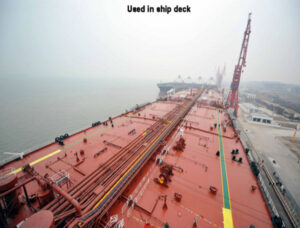In the process of wood panel processing, furniture veneer or composite material manufacturing, adhesive cracks are a common but troublesome problem. It not only affects the appearance of the product, but also may weaken the structural strength and service life.
This article will combine practical applications and comprehensively analyze the causes of cracks at the joints of panels and provide optimization suggestions from multiple angles, including glue performance, material moisture content, construction technology, and environmental control, to help companies improve product stability from the source.
The quality of glue is not up to standard
Glue is the core material for bonding boards, and its stable performance directly determines the bonding effect.
Common questions include:
- The curing speed is inconsistent, and some parts are solid first but not firmly adhered later.
- Initial adhesion is weak and cannot be positioned quickly
- Uneven glue application or poor permeability, resulting in “false adhesion”
Solution:
- Choose professional wood glue/hot press glue, it is recommended to have medium open time and good penetration
- Stir thoroughly before use and mix according to the recommended ratio
- Regularly check the glue coating equipment to avoid glue leakage and glue accumulation
Abnormal moisture content of wood
Inconsistent moisture content of materials such as veneer and wood core is one of the common causes of glue cracking.
Especially in areas with hot and humid climates or cold and dry climates, wood is prone to dimensional changes due to moisture absorption/dehumidification, which in turn causes stress concentration at the glue joints.
Recommended control measures:
- It is ideal to control the moisture content of wood at 8%-12%.
- Before gluing, it should be dried naturally or artificially.
- Press in time after gluing to avoid moisture fluctuations interfering with the curing process
- A layer of closed primer can be applied on the surface to reduce water vapor exchange in the later stage.
Improper construction technology
Even if the materials and glue themselves are qualified, if the construction process is not in place, it may cause bonding failure.
Common questions include:
- The ironing temperature is too high (over 90°C) causing carbonization of the glue layer
- Repeated ironing causes glue seam fatigue
- Oil and dust on the substrate surface affect adhesion
- Improper control of glue coating thickness (too thick or too thin)
Standard operating recommendations:
- Keep the ironing temperature between 60 and 80°C and reduce the number of repeated heating times.
- Clean the surface of the veneer and substrate to ensure it is dust-free, oil-free and free of impurities
- The glue is applied evenly and the film thickness is controlled within the recommended range (usually 0.1-0.2mm)
The environmental temperature and humidity fluctuate violently
The construction and subsequent storage environment have a great impact on the bonded structure, especially in a factory or storage environment with large temperature differences and frequent humidity fluctuations, which can easily lead to stress concentration at the glue joints.
Improvement suggestions:
- Control the workshop temperature at 20 – 30℃ and humidity at 40 % – 60%RH
- After completion, it is recommended to store in a ventilated and dry environment, away from sunlight and rain
- Reserve shrinkage joints when splicing panels to reduce stress concentration caused by thermal expansion and contraction
Conclusion: Prevention is better than cure
Cause classification | Common Problems | Recommended solutions |
Glue quality problem | Poor adhesion and partial debonding | Use high-quality wood glue to control the uniformity of glue application |
Abnormal wood moisture content | Surface warping and adhesive seam breakage | The water control rate is 8%-12%, and the drying control is strengthened |
Construction process issues | Carbonization of adhesive layer and false bonding | Temperature control, pressure control, surface cleaning |
Impact of environmental changes | Glue seam cracking and overall warping | Maintain constant temperature and humidity, and reserve expansion joints appropriately |
If you are facing problems such as cracking and debonding of board glue seams, please feel free to contact us. We can provide you with full-process support such as glue selection, construction guidance, and board technical solution optimization to help you improve product yield and factory quality.




